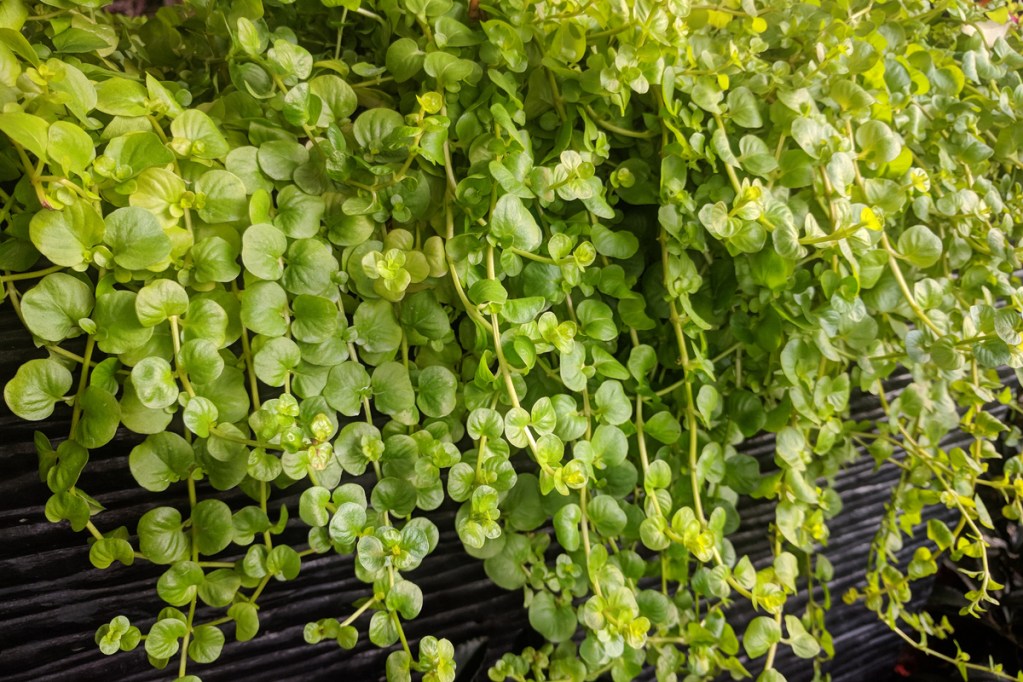
Creeping Jenny is a beautiful perennial that makes an excellent houseplant or groundcover. With proper care, it will even bloom bright yellow flowers that are cheerful and charming. What exactly does proper creeping Jenny care entail? If you want to bring this lovely plant to your home or garden, then this guide will answer all your questions. Keep your creeping Jenny happy and healthy with these care tips. From planting to pet safety, we have you covered in this handy guide to creeping Jenny care.
Planting creeping Jenny

Creeping Jenny is best started in early spring, although indoor creeping Jenny can be started at any time if you keep your home warm. This plant can grow in a traditional garden or a container, although its spreading habit makes it more popular as a container plant. If you do plant it in a traditional garden, be sure to give it some room to grow. Space it roughly 2 feet away from other plants, so it doesn’t grow over its neighbors.
Plant or position your creeping Jenny in full sun to partial shade. More sun typically brings out the highlights in the leaves, giving them a more golden appearance. However, intense, direct sunlight can also bleach or burn the leaves, so afternoon shade is ideal, especially if you live in the southern part of the U.S. When it comes to soil, creeping Jenny isn’t picky. As long as it’s a well-draining soil, practically any type of soil will work.
Creeping Jenny care

Creeping Jenny is a low-maintenance houseplant, and it’s fairly easy to care for in a traditional garden as well. Water is an important part of creeping Jenny care. While your plant won’t turn into dust if you miss a watering every once in a while, it prefers regular deep watering. Water it whenever the top inch or so of soil is dry. This may only be once or twice a week for indoor plants, but can vary based on the weather for outdoor plants.
Fertilize your creeping Jenny during spring and summer with either a balanced or high-nitrogen fertilizer. During the growing season, you can trim your creeping Jenny to help control its size and remove unhealthy stems. Make sure your scissors or shears are clean to avoid spreading harmful bacteria or fungal spores to your plant. You can use the cut stems to propagate your creeping Jenny if you prefer. These propagated plants make great gifts.
Common pests and problems

Most pests won’t affect creeping Jenny, but there are a few common pests and problems to look out for. As with any moisture-loving plant, fungal infections and fungus gnat infestations can become an issue. Air circulation is an important part of keeping these problems at bay. Avoid crowding your creeping Jenny so that air can move freely among its stems.
Common household and garden pests such as aphids and thrips can also occasionally bother creeping Jenny. While damage from these pests is rarely severe, they can still be nuisances and weaken your plant. If the infestation is severe, use an insecticidal soap.
Is creeping Jenny invasive?

Creeping Jenny is considered invasive in the U.S. It’s native to Europe and can be an aggressive spreader under the right conditions. While it isn’t likely to escape your garden in the far north or south, where the more extreme heat and cold will keep it in check, it can escape into surrounding yards, gardens, and natural spaces in other parts of the U.S.
In some states, it’s even listed as prohibited, meaning sales or imports of creeping Jenny may be limited or banned. The best way to control creeping Jenny is to grow it in a container. If you choose to grow it in your garden, be sure there is a border to discourage it from spreading beyond your garden and trim it to control its size.
Is creeping Jenny safe for pets?

Good news — creeping Jenny is considered nontoxic for both cats and dogs. While it can cause an upset stomach if your pet eats a significant amount, you don’t need to panic if your curious pet nibbles or chews on it occasionally. If your pet does eat a significant amount, contact your vet to let them know. Your vet should be able to help treat the uncomfortable symptoms while they last. It generally isn’t great for your plant’s health to be chewed on, though, so if your pet has a habit of eating your houseplants, you might still want to consider moving your creeping Jenny out of reach.
Creeping Jenny is an excellent houseplant that can grow outdoors as well as indoors. It’s a surprisingly hardy perennial, despite its delicate appearance, and is perfect for beginners and experts alike. You’ll enjoy seeing this lovely plant’s yellow flowers and glossy leaves, whether in your home or in your garden, so why not get started growing it today?



